The current pandemic has brought back difficult memories from nearly two decades ago, when I lived through the 2003 SARS outbreak in Hanoi with my family. In February of that year, an American businessman visiting from Hong Kong became seriously ill and was taken to the Hanoi French Hospital, not far from my office. World Health Organization (WHO) epidemiologist, Dr. Carlos Urbani — my wife’s colleague in the U.N. system in Vietnam — examined the patient and became the first to identify SARS as a new and dangerous viral disease. He alerted the WHO and the Vietnamese Ministry of Health, triggering a quarantine of the French Hospital where several Vietnamese medical workers would fall ill and die. Dr. Urbani himself succumbed to SARS and died, but his early actions galvanized efforts to isolate and contain the disease in Vietnam and throughout the world, saving many lives. In July 2003, the WHO declared the SARS outbreak had been contained after resulting in 8,098 cases and 774 deaths.
COVID-19 appears to have a lower fatality rate than SARS but is far more contagious, having spread rapidly across the globe from its origin in Wuhan, China in November 2019, resulting in 4,291,081 cases worldwide and 293,157 deaths to date. The pandemic is also causing a global economic meltdown as countries implement extreme measures to contain the virus.
As this once-in-a-century event unfolds, foreign policy experts have begun to speculate about the future geopolitical implications of COVID-19. Some have suggested that the pandemic could reshape the global order, elevating China’s position at the expense of the United States, while others are skeptical that China has the capacity to emerge as a dominant world power. Still others say the pandemic won’t reshape the global order so much as accelerate history, revealing and reinforcing the fundamental characteristics of geopolitics today. In this scenario, we can expect to see a further waning of American leadership, less global cooperation, and enhanced rivalry and discord between the United States and an ascendant China.
A key near-term variable is the sequencing of economic recovery.
Humility is needed as we consider how the pandemic could affect longer-term geopolitical trends or potentially define a new global order. However, a closer look at Southeast Asia may offer some clues. As a diverse and dynamic region of 650 million people on China’s doorstep, Southeast Asia has been emerging as a hotbed of strategic competition between China and the United States. Although the pandemic does not appear to be reshaping the regional order in fundamental ways, it could well accelerate preexisting trends and bolster China’s position. A key near-term variable is the sequencing of economic recovery. If China recovers faster from the outbreak, it could reinforce its already advantaged economic position, advance its strategic goals as a result, and undercut U.S. efforts to compete with Beijing in the region. But China could also face resistance and pushback, as it is currently encountering in Europe, if its regional diplomacy becomes increasingly hostage to nationalistic impulses and rhetoric.
MASK DIPLOMACY MEETS GLOBAL RETREAT
The recent international behavior of the two great powers resonates with all of the above predictions to some extent. In March, as China began to recover from the outbreak, Beijing launched a global campaign to repair its damaged image, rewrite the narrative of the crisis, and position itself as an emerging leader in world affairs. It quickly dispatched medical supplies and medical teams to Southeast Asia, Europe, and Africa, and its diplomats aggressively defended China’s handling of the crisis, even floating a conspiracy theory that the U.S. military created the outbreak in Wuhan. But this hard-hitting style soon backfired as many Chinese masks and testing kits were found to be defective, and other countries started to question China’s diplomatic hubris and ill-concealed intentions. The European Union’s foreign policy chief Josep Borrell criticized China for pursuing geopolitical goals through the “politics of generosity,” while numerous Chinese ambassadors have been summoned by their host countries for spreading rumors and misinformation.
In the United States, as the COVID-19 crisis deepened and medical equipment became scarce, the Trump administration began poaching supplies from other countries, including allies, and strong-arming private firms to prioritize the United States over other parts of the world. It also began blaming China and impeding global cooperation. Secretary of State Mike Pompeo insisted that G-7 foreign ministers refer to COVID-19 as the “Wuhan Virus,” scuttling a communiqué when other world powers rejected the term, and President Trump has expressed interest in suing Beijing for damages, with the United States seeking $10 million for every American death. Trump has also halted U.S. funding for the WHO, attacking the organization for “severely mismanaging and covering up the spread of the coronavirus” and being soft on China. On May 4, when world leaders gathered for a virtual vaccine summit to pledge billions of dollars to develop drugs to fight COVID-19, the United States wasn’t even at the table.
Gone are the days, apparently, when the United States would lead international efforts to address global crises, as it did following the Southeast Asian tsunami in 2004 and the Ebola outbreak in West Africa in 2014-2016. The U.S. domestic response has also exposed a fragile healthcare system and a dysfunctional federal government that has failed to formulate effective policies or marshal resources to combat the virus, signaling a stunning decline of American competence. The world is watching in disbelief.
SOUTHEAST ASIA BEFORE THE PANDEMIC
At a trilateral dialogue organized by Brookings in Singapore in late October 2019, just before COVID-19 emerged in Wuhan, experts from Southeast Asia, Australia, and the United States gathered to examine regional trends in the context of escalating U.S.-China’s rivalry and China’s dramatic rise. A key theme of the dialogue, as reflected in the published conference report, was how the region can expand middle-power agency and move beyond an all-or-nothing strategic choice between Washington and Beijing.
In addition, Southeast Asian participants noted that Beijing has successfully leveraged its signature Belt and Road Initiative (BRI) to expand its soft power in the region, to the detriment of U.S. influence. This is especially true in mainland Southeast Asia, where China is cultivating new sub-regional initiatives like the Lancang-Mekong Cooperation mechanism and has set aside $22 billion for BRI projects and related economic initiatives. The United States has responded by joining Tokyo in the Japan-U.S. Mekong Power Partnership, which is developing electricity grids with an initial U.S. commitment of $29.5 million, and launching a trilateral infrastructure partnership with Japan and Australia. The goal is to incentivize private sector-led financing of infrastructure in the region, especially with allies and partners.
EMERGING COVID HOTSPOT
U.S.-China rivalry is now intensifying just as Southeast Asia is emerging as a new COVID-19 hotspot. The region has reported a cumulative 61,129 cases as of May 12, with Singapore, Indonesia, the Philippines, and Malaysia comprising almost 94% of the total. While these numbers pale in comparison to those seen in the United States and Europe, tens of thousands of additional infections are likely going undetected due to low testing rates, especially in Indonesia, which has the world’s fourth-largest population of over 270 million. Indonesian President Joko Widodo was initially reluctant to order a nationwide lockdown or domestic travel ban, wary of the economic impact, but on April 21 he finally moved to ban the traditional Ramadan exodus when millions of Indonesians traditionally travel back to their hometowns and villages in the Muslim-majority country.
Source: Johns Hopkins University.
Despite sharing an 800-mile border with China, Vietnam appears to have achieved the most effective COVID-19 response in Southeast Asia through a combination of early and decisive action, extensive surveillance, mass mobilization, and effective use of social media to publicize regulations and programs related to the pandemic. Drawing on its SARS experience, the Vietnamese government moved quickly to establish a National Steering Committee for COVID-19 Prevention and Control; halt the vast majority of domestic flights, trains, and buses; and quarantine thousands of citizens in military camps. It also developed intricate and multi-layered contract-tracing procedures. The country of nearly 100 million has reported no virus-related deaths, and infection rates are significantly lower than Singapore, South Korea, and Taiwan — all of which have been singled out as models for others to follow.
At a regional level, the Association of Southeast Asian Nations (ASEAN) has been slow to develop multilateral responses to complement these country-level efforts, but on April 9 it did endorse collective steps to fight the pandemic. Subsequently, the regional grouping convened a Special ASEAN Summit on COVID-19 where, among other topics, they discussed the economic fallout and the development of a post-pandemic recovery plan. The five largest ASEAN economies are expected to contract by 0.6% this year according to the International Monetary Fund (IMF). Largely export-oriented, most ASEAN economies depend heavily on regional trade flows as well as tourism.
“AID DIPLOMACY” COMES TO THE REGION
In response to the pandemic, both China and the United States have been expanding aid to ASEAN as it battles COVID-19 and tries to manage the associated economic challenges. As early as February 20, China joined ASEAN for a Special ASEAN-China Foreign Ministers’ Meeting on COVID-19 in Laos and agreed to increase information sharing, support business affected by epidemic, and mitigate supply chain disruptions of medical supplies. China has also sent shipments of masks and ventilators to the region, including to hard-hit Indonesia, while dispatching teams of experts to Cambodia, Myanmar, Malaysia, and the Philippines. This diplomacy and assistance has been largely welcomed by ASEAN governments and business elites because they view China as their best opportunity for post-pandemic economic recovery. China is ASEAN’s biggest trading partner, largest bilateral infrastructure financier, and main source of tourists coming from outside the region.
The Chinese economy is also confronting serious challenges, of course. It contracted by 6.8% during the first quarter of 2020, is anticipating a demand shock for Chinese exports, and could face supply chain issues as companies seek to reduce dependence on Chinese manufacturing. But relative to other countries, China appears to be taking tentative steps toward economic recovery: People are going back to work, factories are reopening, and the IMF is projecting that Chinese GDP will rebound and grow by 1.2% this year (compared to -5.9% for the United States and -5.2% for Japan). Supply chains may also prove sticky because it could be difficult to replace the dense network of suppliers that exist in China and because a growing share of the output of supply chains is sold in the Chinese market.
Meanwhile, alongside these economic trends and developments, the Trump administration has announced that it is providing approximately $35.3 million in emergency assistance to support ASEAN members combat COVID-19 — preparing laboratories for large-scale testing, for example, and training rapid-responders in contact-tracing. In a joint statement released in early April, Southeast Asian officials thanked Washington for supporting ASEAN and also welcomed U.S. support for the WHO, unaware that U.S. funding for the U.N. health agency would soon be suspended. For his part, Secretary Pompeo highlighted U.S. assistance to ASEAN during a foreign minister’s video meeting on April 23. He also used the opportunity to blast China for recent maritime actions in the South China Sea, saying it is taking advantage the pandemic to advance its territorial ambitions, and called on China to close its wildlife markets.
GEOPOLITICAL IMPLICATIONS
Chinese aid and diplomacy has thus far been better received in Southeast Asia than U.S. assistance or Washington’s efforts to hold China accountable for the pandemic. Going forward, as ASEAN governments seek to reopen their economies, they will be watching the Chinese economy closely for signs of recovery and possible knock-on effects. Even before COVID-19 hit, 79.2% of Southeast Asian policy elites viewed China as the most influential economic power in the region, compared to just 7.9% for the United States and 3.9% for Japan, although they remain distrustful of China’s long-term strategic intentions according to a respected regional survey. ASEAN policymakers will continue to be clear-eyed about these economic realities as they look to the future, estimate China’s economic footprint, and calculate their likely interdependencies and opportunities with Beijing.
National University of Singapore Professor Khong Yuen Foong has aptly framed the geopolitical implications for ASEAN as the recovery unfolds: “I will not underestimate the U.S.’s economic resilience and technological ingenuity, but if China were to do better on the economic front, its narrative about being the wave of the future will fall on receptive ears in Southeast Asia.”
Yet, while Beijing may reap strategic benefits from the pace and sequencing of economic recovery, it could also face trip wires if Chinese diplomacy invokes nationalistic rhetoric or aggressively pursues its territorial claims in South China Sea. The pandemic has already spurred some anti-Chinese sentiment and activities in the region, particularly in Indonesia, which has a long history of distrust and resentment between the ethnic Chinese community and the indigenous population. Through social media, Filipinos have also responded angrily to a Chinese music video — titled “One Sea” — that showcases China’s COVID-19 aid to the Philippines while simultaneously appearing to legitimize Chinese claims to waters that Manila views as its territory in the South China Sea. A few days before the music video was released, a Chinese warship aimed weapons at a Philippine navy vessel near a disputed reef. The Chinese coast guard also sank a Vietnamese fishing boat in early April.
This maritime assertiveness will provide a continued opening for the United States to cultivate relations with ASEAN countries in the security domain. To be effective in sustaining American power and influence, however, Washington must also improve its economic standing in a region where China is increasingly achieving its strategic goals through economic statecraft, and where economic factors are playing a prominent role in shaping the decisions of Southeast Asian leaders on critical issues that divide Washington and Beijing — including the deployment of 5G technologies. As I have argued elsewhere, this will not only require operationalizing and expanding infrastructure coordination with allies and partners, but also developing a comprehensive economic strategy that offers a positive message for multilateral engagement with the region. The reorganization of supply chains is another important variable, which could redound to the benefit of Washington or Beijing depending on how trends unfold.
Washington must also improve its economic standing in a region where China is increasingly achieving its strategic goals through economic statecraft.
Finally, as the United States and China jockey for position, both countries have been diminished by their domestic responses to COVID-19. The aura of American competence has been punctured, and the world will ultimately remember that China muzzled the whistleblowers and allowed the virus to spread across the globe — enabled by a governance system that values centralized, personalized power over transparency. Where the great powers have stumbled, however, middle powers have succeeded spectacularly in controlling the virus, particularly in Asia. These include democracies like South Korea and Taiwan and single-party systems like Vietnam. Their success does not appear to stem from regime type, but rather from effective and efficient governance — including the capacity of central authorities to mobilize and direct resources in a time of national crisis. In their approach to COVID-19, middle powers have outshone the giants and identified pathways to recovery.
Looking back at the 2003 outbreak of SARS in Hanoi, I still recall my anxiety when my daughter, then a toddler, developed a high fever that mimicked the disease. I also remember the courage and sacrifice of international civil servants like the WHO’s Carlos Urbani, and now think of others like him who are on the front lines of the current pandemic. Halting funding to the WHO at this juncture — amid the most serious international health crisis in a century — sends a toxic and dispiriting message from America to the rest of the world. The United States should learn from this tragedy and use it as an opportunity to restore American leadership, reengaging and empowering international institutions in the process.
Adrien Chorn provided research assistance for this post, including on the graph.



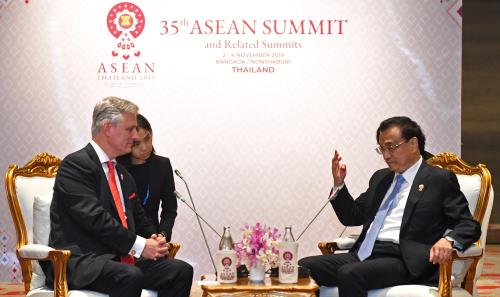
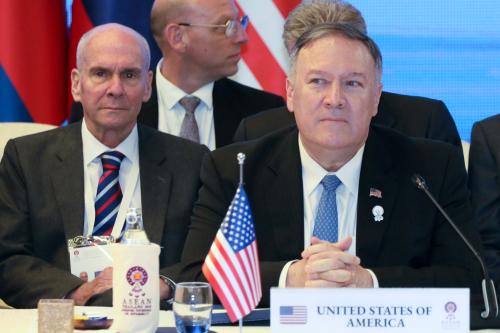
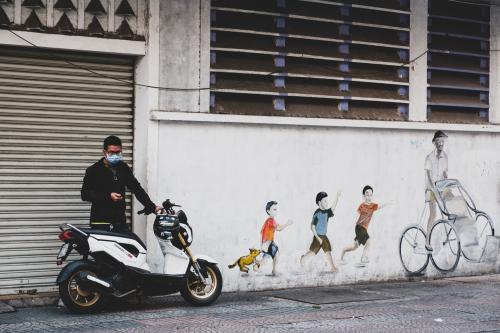

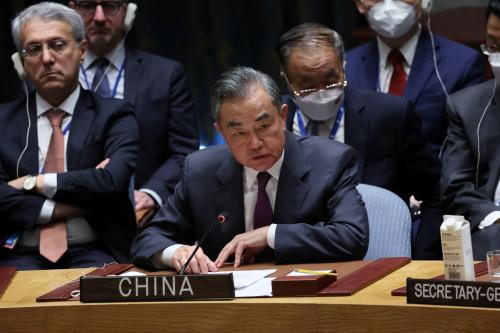
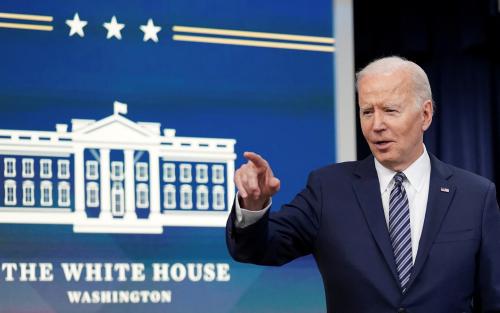
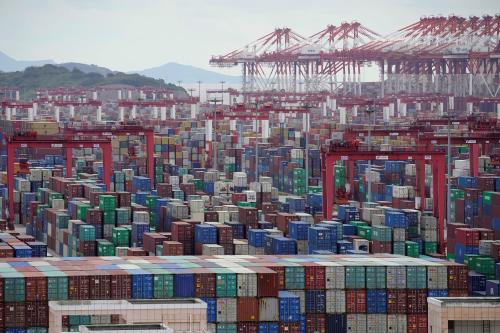
Commentary
US-China rivalry after COVID-19: Clues and early indications from Southeast Asia
May 14, 2020